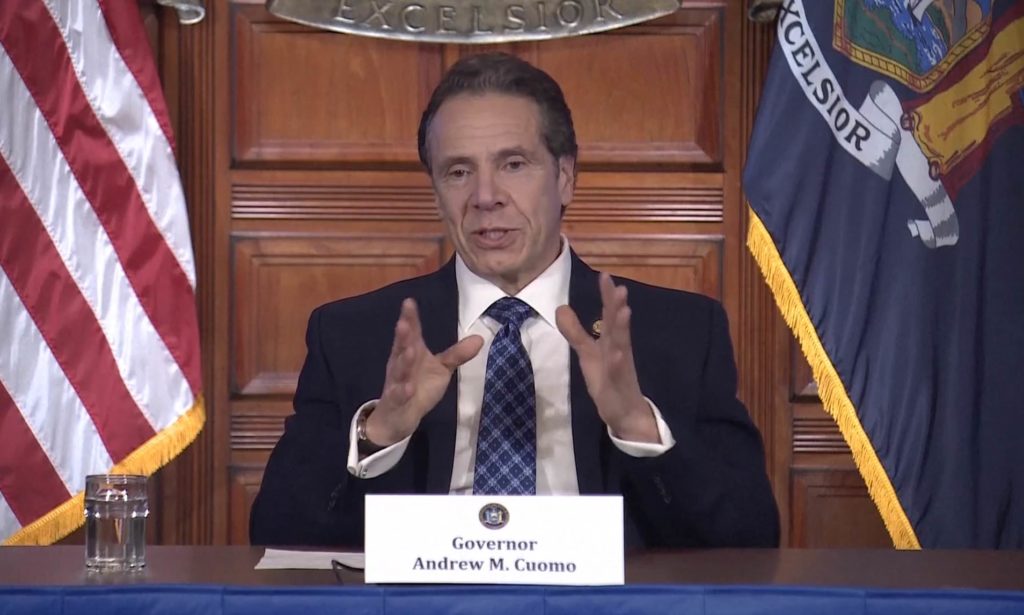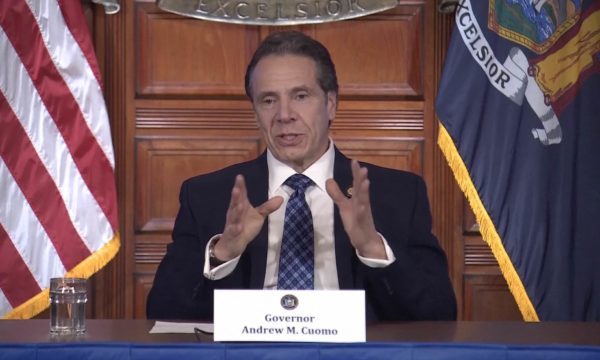By Max Anders
The Empire State is one of the hardest-hit states by the coronavirus, a fact underpinned by New York governor Andrew Cuomo’s daily press briefings, which are televised in full or part to national and international audiences, and in which it was revealed on Monday that the state’s death toll has now surpassed 10,000.

Yet, one week after the state recorded its worst single-day death toll and on the same day the state transcends a five-figure fatality benchmark, Cuomo announces the worst may be behind New York, resting this assumption cautiously on the number of hospitalizations leveling over the last few days. “I believe the worst is over if we continue to be smart,” Cuomo said. “I believe we can start on the path to normalcy.”
Arguably, the leveling numbers of deaths, hospitalizations and new infections in recent days is an encouraging sign but, at the same time, the World Health Organisation (WHO) and epidemiologists around the world caution against acting prematurely and undoing all the positive gains made by draconian-edits in the fight against the global pandemic.
Towards that end, on Monday, the New York governor, along with his counterparts from neighboring states, also jointly announced a commitment to a regional approach to developing a plan for the concentrated easing of restrictions that will be guided by health professionals and experts rather than politicians and business interest groups. “This is about being smart. Not political, but smart,” said Cuomo in reference to this agreed-upon approach.
The states involved include Connecticut, Delaware, Massachusetts, New Jersey, New York, Pennsylvania and Rhode Island and the planned meetings are to commence on Tuesday with the governors, gubernatorial chief of states and designated public health and economic development advisors all in attendance. Six of the seven states are represented by Democratic governors with Massachusetts the only outlier to feature a Republican governor.
On Monday, when President Donald Trump was pressed on his thoughts about the governors’ plans, he rebuked those by claiming ‘total’ authority was his in these matters.
“When somebody is president of the United States, the authority is total,” Trump said in his press briefing, adding that it’s “the way it’s got to be. It’s total. It’s total. And the governors know that.”
Even though Trump added later that states were largely pleased with his administration’s efforts and alluded to solidarity with governors when he said, “I am getting along very well with governors,” the media’s focus returned repeatedly to the discord between the federal and state governments about where responsibility and authority begins and ends. A most distracting modus operandi keenly pursued by media analysts when putting forward Trump’s shortcomings against Cuomo’s strengths in the response to the coronavirus outbreak.
That Cuomo’s stock is on the rise across the country to the point bookmakers are taking stock with Cuomo odds being added to the 2020 US Elections market for bettors to consider wagering on, even though the governor has made no presidential ambitions known thus far, is just another example of unnecessary diversion. Besides, it calls for voters to lust after a prospect that is unlikely to emerge this election year anyway.
When the challenge faced by the government is to create an exit strategy, which is both staggered and calibrated with proper testing and isolation initiatives in place to avoid a second wave of COVID-19 cases that would otherwise overwhelm health-care systems, a united front between all levels of government is needed. Any political point-scoring or media bias that could backfire and lead to total panic and pandemonium should take a backseat to the public’s interest.
As Cuomo said a few weeks ago, “There is no politics, there is no red and blue, We are red, white and blue!. So, let’s get over it and lead by example,” he said.
<iframe width=”1440″ height=”668″ src=”https://www.youtube.com/embed/BWxo2JUJzWo” frameborder=”0″ allow=”accelerometer; autoplay; encrypted-media; gyroscope; picture-in-picture” allowfullscreen></iframe>
The strain of lockdown is bearing down on the economy and the toll on mental health is mounting in direct proportion, making the reconciliation of the extraordinary measures with both its immediate as well as long-term effects difficult for the public to absorb. As days get longer and warmer, this is only going to make sheltering within the confines of four walls that much more unbearable psychologically for everyone concerned.
Overall, the U.S. has the dubious honor of having the highest number of cases and deaths worldwide. Over half a million people have tested positive for the virus and nearly 25,000 people have died as a result of COVID-19 according to the latest figures. Worldwide, nearly 2 million people have been infected with COVID-19 and almost 115,000 people (according to figures on April 13) have died as a result. It is suspected that all these numbers are higher in reality.
New York has played a major role in the United States’ standout figures. The most confirmed cases of COVID-19 and the highest number of fatalities thus far belong to New York, giving it the label ‘the US epicenter’ of the global pandemic. The death toll from coronavirus in New York city alone is now greater than that endured in 911, the day the then city’s mayor said the casualties from the attack were ‘more than any of us could bear.’

Leave a Reply
You must be logged in to post a comment.